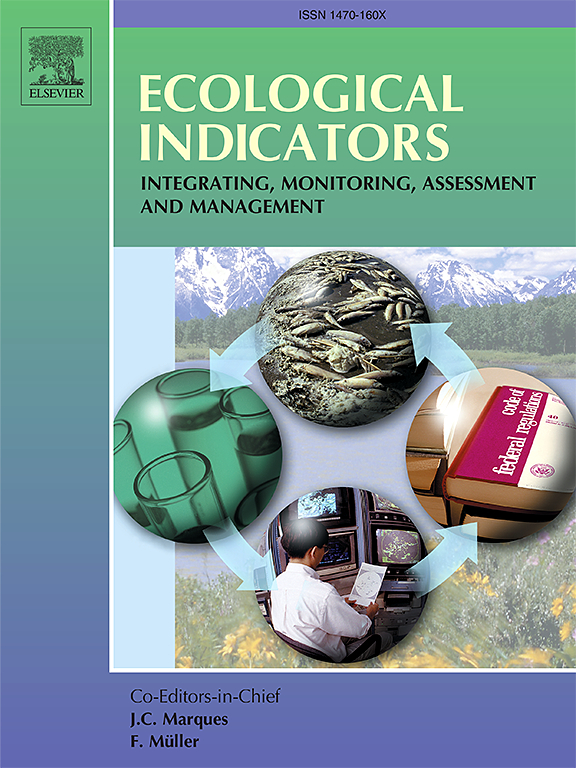Vegetation height estimation based on machine learning model driven by multi-source data in Eurasian temperate grassland
IF 7
2区 环境科学与生态学
Q1 ENVIRONMENTAL SCIENCES
引用次数: 0
Abstract
Eurasian Steppes, the world’s largest grassland ecosystem, significantly contribute to our ecological environment. Grassland height is a crucial biophysical factor, offering insights into vertical vegetation structure and regional ecosystem dynamics. Therefore, investigating the trends in changes of grassland height in Steppes is vital for sustainable land use and ecological balance. This study utilized machine learning models such as Random Forest (RF), AdaBoost, BP-Neural Network (BPNN), and Stacking Ensemble, combining them with topographic and meteorological data, MODIS reflectance data, and grassland height measurement data. The first Eurasian temperate grassland vegetation height dataset was finally generated. The results highlighted the superior performance of the Random Forest with an R2 of 0.54, RMSE of 7.39 cm, and MPAE of 49.25 %. Spatial and temporal analyses revealed a discernible spatial distribution in grassland heights across Eurasia, characterized by a consistent decrease from west to east and north to south. Throughout the year of 2001–2021, there were minor fluctuations in changes of grassland heights, ranging from 15.93 to 17.99 cm, with an overall incremental trend of 0.027 cm annually. Significance tests indicated that approximately 4.40 % of the surveyed regions, primarily concentrated in northern Central Asia, experiencing a noteworthy increase in grassland height dynamics. Conversely, about 2.10 % of the areas, predominantly located in Inner Mongolia, China, and southern Central Asia, have witnessed a reduction in grassland height. This study reveals both temporal and spatial dynamics by offering a comprehensive dataset on vegetation height in Eurasian temperate grassland. These discoveries bear significant ramifications for land management strategies and the advancement of ecological sustainability objectives. Additionally, they contribute significantly to improve the accuracy of estimates of aboveground biomass and carbon stocks in grassland ecosystems.
求助全文
约1分钟内获得全文
求助全文
来源期刊

Ecological Indicators
环境科学-环境科学
CiteScore
11.80
自引率
8.70%
发文量
1163
审稿时长
78 days
期刊介绍:
The ultimate aim of Ecological Indicators is to integrate the monitoring and assessment of ecological and environmental indicators with management practices. The journal provides a forum for the discussion of the applied scientific development and review of traditional indicator approaches as well as for theoretical, modelling and quantitative applications such as index development. Research into the following areas will be published.
• All aspects of ecological and environmental indicators and indices.
• New indicators, and new approaches and methods for indicator development, testing and use.
• Development and modelling of indices, e.g. application of indicator suites across multiple scales and resources.
• Analysis and research of resource, system- and scale-specific indicators.
• Methods for integration of social and other valuation metrics for the production of scientifically rigorous and politically-relevant assessments using indicator-based monitoring and assessment programs.
• How research indicators can be transformed into direct application for management purposes.
• Broader assessment objectives and methods, e.g. biodiversity, biological integrity, and sustainability, through the use of indicators.
• Resource-specific indicators such as landscape, agroecosystems, forests, wetlands, etc.
 求助内容:
求助内容: 应助结果提醒方式:
应助结果提醒方式:


